It was September 12, 2018, when I heard the news of Typhoon Mangkhut heading for the Philippines. News outlets were saying it was comparable to Haiyan. Watching the steady coverage, I was worried about how the Philippines would be able to cope yet again.
The closer it was, the more worried I became–this is another potentially life-threatening assignment I would have to face. A typhoon of this magnitude normally becomes a hot topic in our office, and there’s a flurry of activity in setting up a response.
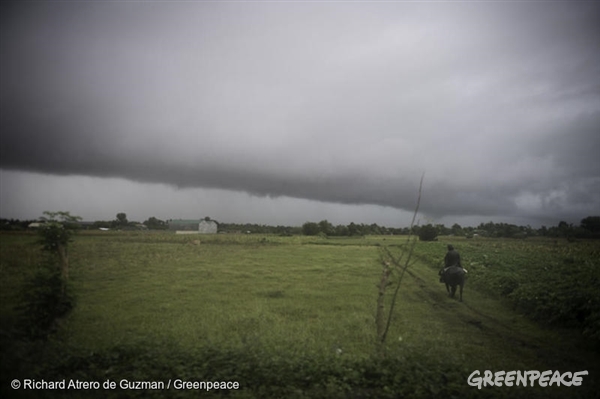
Response work options eventually arose and plans were finalized: it was decided that we’d send a documentation team, which included me, to ground zero where the typhoon was expected to hit.
On our way to Cagayan Valley, I was silently praying for God to guide us and keep our journey safe. It was a smooth 10-hour ride from Manila to Tuguegarao, Cagayan Valley. But the drive north held some sad observations. Along the way, we came across several farmers prematurely collecting their harvests. The crops were not at their peak, some not quite ready to be reaped at all. It would mean lower profits, a less productive season. But, like in previous storms, these farmers have no other options. The early harvest had to be done in preparation for the arrival of Typhoon Mangkhut.
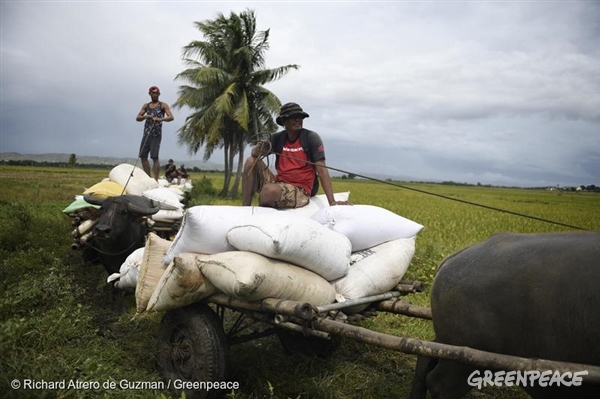
Eventually, we found ourselves on a long road leading to Tuguegarao’s center. We went to the hotel first booked by the office. Unfortunately, the area where the hotel was located proved to be unsafe for such a typhoon. With ongoing construction in the vicinity, the potential of dangerous debris flying about during the storm would be high. So we kept looking for a safer place to stay. It had to be something that could not be destroyed by 6-meter storm surges. Something that can withstand a Signal No. 4 storm with winds going at 205 kph.
All hotels in the center were full, but we were fortunate to have finally found Villa Domingo, in Solana, Cagayan Valley. Just outside the center of Tuguegarao City, the hotel would be a safe place to get some rest while waiting for the typhoon to make landfall.
After a quick check-in, we hurried to the municipal agriculture office. Guided by one of the town councilors, we were introduced to a corn farmer named Josephine Dayag.
Ate Josephine and her recollection of Supertyphoon Lawin
Ate Josephine told us how grateful she was for her corn plantation’s healthy crops. But it pained me when she began crying, sharing her worries about how it might all be destroyed by Mangkhut. Her farm had been heavily damaged by Supertyphoon Haima (locally, “Lawin”) in 2016, dealing a blow to her livelihood. She had then replanted her crops, but the farm was again damaged by drought. That season, her rice crops yielded only 28 cavans, around 68% less than its normal harvest of 90 cavans.
Ate Josephine said she hasn’t recovered yet from those losses, and now another typhoon was about to hit their region once more. She had been hoping that this year’s corn harvest would cover those losses. A good harvest would have been her chance to pay her debts, all of which she had incurred because of the damage wrought by extreme weather.
I told her that we would return after the typhoon. We promised each other that we would pray for the typhoon to move away from the Philippines. For Ate Josephine, faith was the only thing she could hold on to. Before we left, Josephine asked us to take a photo of her corn field. At least, she said, she would have a memento of her healthy crops before the storm destroys it.
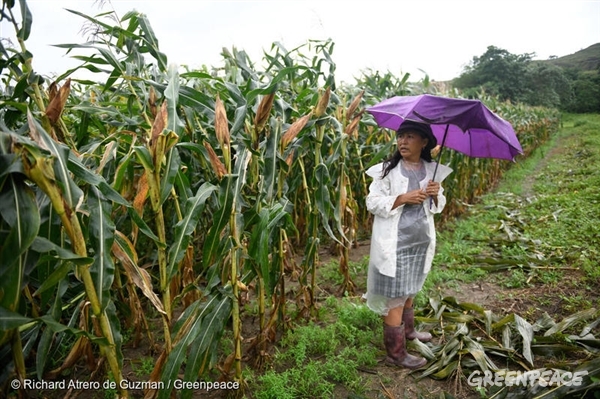
Her story is not unique. Farmers in many regions face the same crippling debt, taking on loan after loan to keep their farms afloat in the face of a changing climate.
The night the typhoon made its landfall, the electricity got cut off. Strong winds shook our hotel door and windows. I felt secure inside the room, but the angry sound of Mangkhut’s winds worried me. I couldn’t sleep, as the howling winds kept me awake. I thought of Josephine’s corn field and those of other farmers. For long hours throughout the night, our building was continuously battered by the storm. Sitting there, I realized it was my first time to experience being in the eye of a typhoon.
Typhoon Ompong’s aftermath
The next morning, cars were advised not to travel. Jim, our videographer, Bahag, our photographer, and Albert, our security and logistics coordinator, went out by foot to document people’s stories as the typhoon was happening. I stayed at the hotel and interviewed evacuees who took shelter at Villa Domingo. I found it heartbreaking to hear their stories and experiences of surviving the different typhoons which had come in just a span of two years.
We visited Ate Josephine and found her at home, still surprisingly relaxed and calm. She had not seen her farm yet. When we arrived at her farm, she couldn’t hold back the tears. She didn’t know what to do and was speechless for most of the time. Her hopes, her rice crops, are gone. The corn is not yet ready for harvest. She has to wait for another month for them to mature.
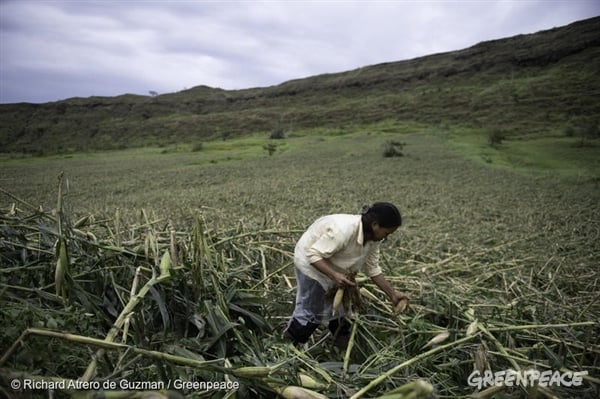
I left Ate Josephine’s farm with a heavy heart. I didn’t know how to help her, except by giving her comfort with a hug.
I was frustrated, too. There should be someone accountable for what happened. Farmers are the ones who provide us with the food we eat. Yet, they are the first to go hungry during calamities and inflation, are the least of the government’s priority, and corporations and traders take advantage of their vulnerable situation. Instead of helping the farmer, these corporations and traders are the ones making the farmers’ lives harder. Binabaon sa utang at utang na loob – this is the reality of our farmers and they have no choice.
How are they expected to recover when caught in this cycle of destruction, indebtedness and poverty? If our farmers lose all, what happens to the rest of us who rely on them to grow the food we eat?
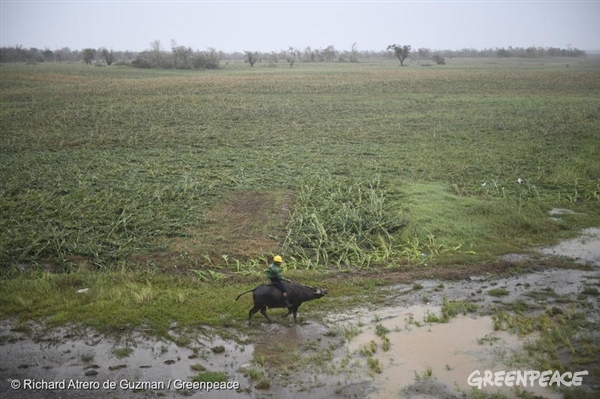
As we were traveling to Banaue to cover the devastating landslides there, we received word that the photos we took in Cagayan had been featured in a national newspaper. Front page news. Our team’s spirits were lifted. No, it wasn’t about the prestige of having your work picked up by the news, but the idea that the experiences of people affected by Mangkhut will be heard by more people. Their stories have been told to the rest of the country, their voices amplified.
Grace Duran-Cabus is the Images Producer of Greenpeace Southeast Asia. Follow her on Instagram: @gracecabus
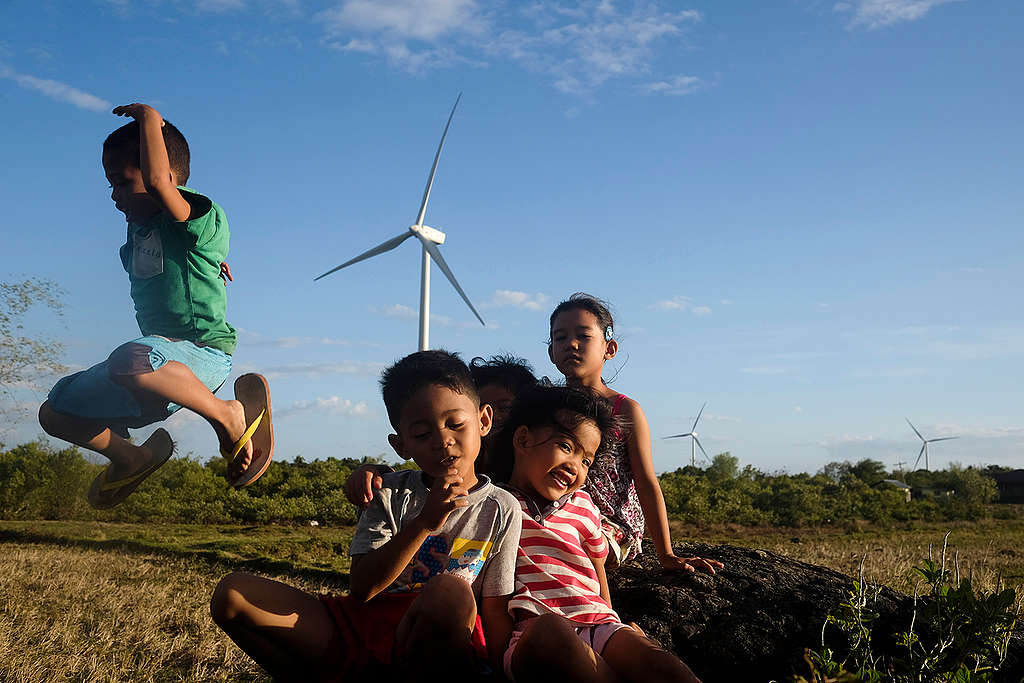
Renewable energy is the key to our country’s energy independence. But coal companies and politicians are holding us back.
